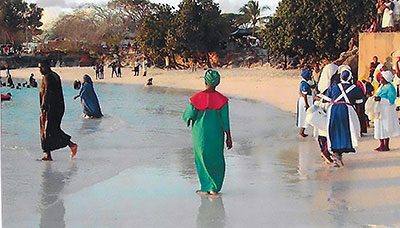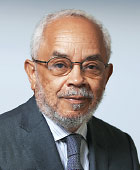When Africa and Europe Meet in Church
Abstract
It was a glorious wintry day to stroll through New York City’s Central Park, going from west to east, with a blinding sun warming the face. Solo pedestrians were carrying on telephone conversations with invisible others at the other end of the line. Nannies speaking foreign tongues pushed prams across the park as the motion and warmth lulled every baby into a loveable quiet. I was on my way to The Metropolitan Museum of Art (The Met) to follow up on a recommendation from an academic psychiatrist colleague that I visit the exhibition titled “Africa & Byzantium.” He thought that the exposition might help clarify for me the community’s initially negative response to the Spiritual Baptist Church’s appearance in 1957 Barbados. My decades-long interest in this religious group is described in Ye Shall Dream (University of West Indies Press, 2010). Commentators have noted the movement’s emphasis on liberation theology and improving members’ self-esteem and independence of thought.

Members of the Barbados Spiritual Church attend an immersion baptismal service (circa 2008).
The historian, C.M. Jacobs (author of Joy Comes in the Morning, Caribbean Historical Society, 1996), suggested that traces of the Spiritual Baptist faith appeared in Trinidad around 1815. He postulated that formerly enslaved Black Americans, who had fought on the side of the British in the War of 1812, were liberated and resettled in Trinidad. Referred to as “merikun Baptists,” they are said to have brought with them a Protestant Baptist liturgy. However, their worship style gradually included more ecstatic practices like dancing in the Spirit, loud singing and chanting accompanied by drums, bellringing, blessing the church by pouring holy water at the four corners of the edifice, and getting into the Spirit at the center pole of the church. Colonial government authorities were apparently concerned that this style of Africanized practice might undermine the spread of Christianity. The church group, finally labeled Shouters and disturbers of the peace, was outlawed in 1917 and regained legal status in 1951. That decision followed considerable political debate within the Trinidad legislature.
Nourishing his church in Barbados during the late 1950s, Leader Granville Williams maintained the practices that he had learned from the Trinidadians. These ritual elements evoked antecedents of African worship, particularly since they were unknown to other church groups in Barbados. Many Barbadians felt that the “Africanities” pointed in the direction of the dark arts, and they concluded that the novel practices were a throwback to the 1940s and 1950s. That was when common talk of Obeah tales frightened children and others who feared being hexed. However, Williams made clear from the start that his activities were grounded on his connections to the Holy Spirit. There was no linkage to African deities and rituals that one might see in Caribbean Shango, Espiritismo, Santeria, or Vodun. Still, the Barbados Spiritual Baptist group encountered community opposition related to theology. Nonmembers obviously thought about what had occurred in Trinidad, while converts to the new faith insisted that they were centered on Christ. Believing in Jesus and walking in His ways led to acquisition of powers of foresight, healing, and an ability to communicate with the spiritual world of angels and saints.
Between the 1950s and 1980s, there was also much discussion in the island about Black power, Caribbean independence, a renewed interest in Africa, and a growing intolerance of White privilege. The Spiritual Baptists talked about blackness and its links to economics, politics, and music, while also insisting that Jesus was a Black man. One would have thought that this secular turn to Black politics and culture would have been neatly melded with the rearrangement in religious ethos. Instead, the Spiritual Baptists were taunted and mocked and their head ties were publicly pulled apart. Of course, time gradually healed this type of disdain, and the public attenuated its own criticism and grew tolerant and even friendly.
As the years passed, I wondered about the difference between community objections to the arrivals of this new movement and a deeper, but quieter undermining by the older established churches on the island. The latter conveyed a feeling that African culture knew little about the Christianity of the European-grounded missionary churches. However, in my visit to The Met, I realized that Africa had seen Christianity up close for a long time between the third and seventh centuries after Christ. St. Mark reportedly brought the religion to Egypt in 49 CE. By the fourth century, Christian communities in Egypt were flourishing, and Eritrea and Ethiopia had formally adopted Christianity. Here I was looking at a sixth-century Egyptian wool tapestry depicting Mary holding the infant Christ and the archangels Michael and Gabriel at her sides. There was also in the exhibition a wall painting from 10th-century Sudan of a bishop being protected by St. Peter. All of this predated the work of Portuguese and Spanish missionaries between the 15th and 18th centuries who spread Christianity along coastal Africa.
It seems clearer now that the Spiritual Baptist message of melding politics and theology was initially too complicated for the colonizing churches and their conservative congregations. Acceptance of the religion has improved in recent decades, although I have not observed much enthusiasm for the notion that Jesus was Black. In any event, The Met assured me that Africa was not as impervious to Christianity as some assert. While being politically anti-colonial and against White privilege, Williams saw Christ and the power of the Holy Spirit as a powerful tool to combat colonial oppression. He wanted to frighten Whites, not Blacks, with the power to heal and to talk with the saints. ■




